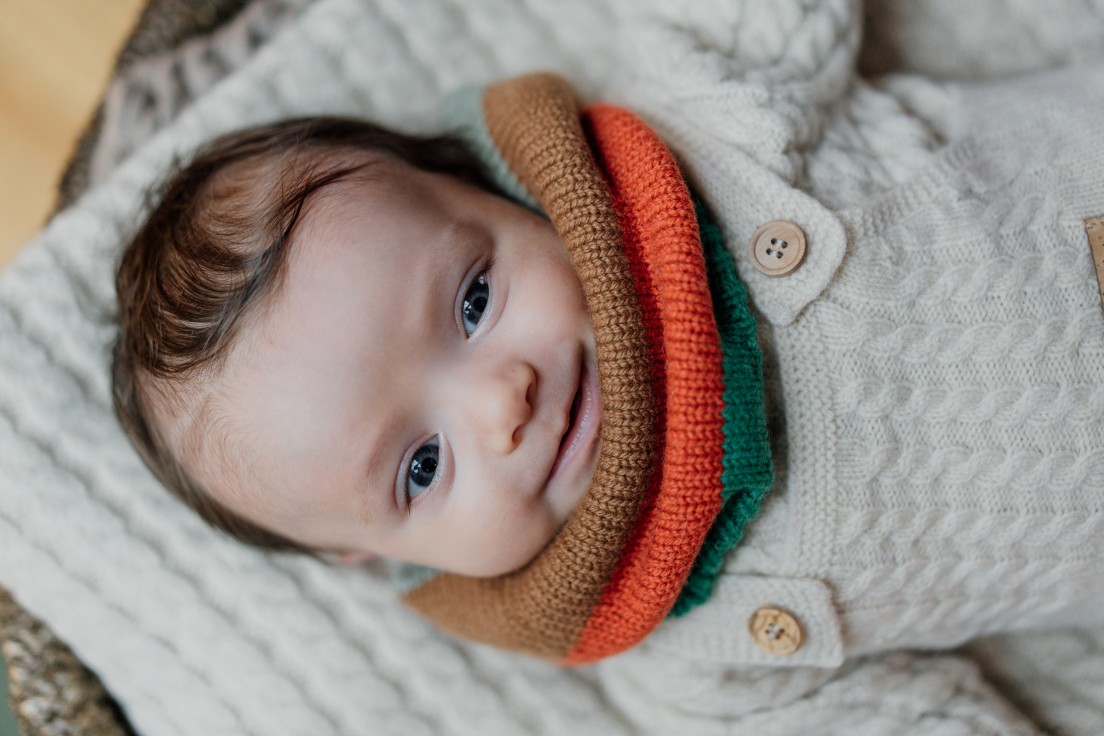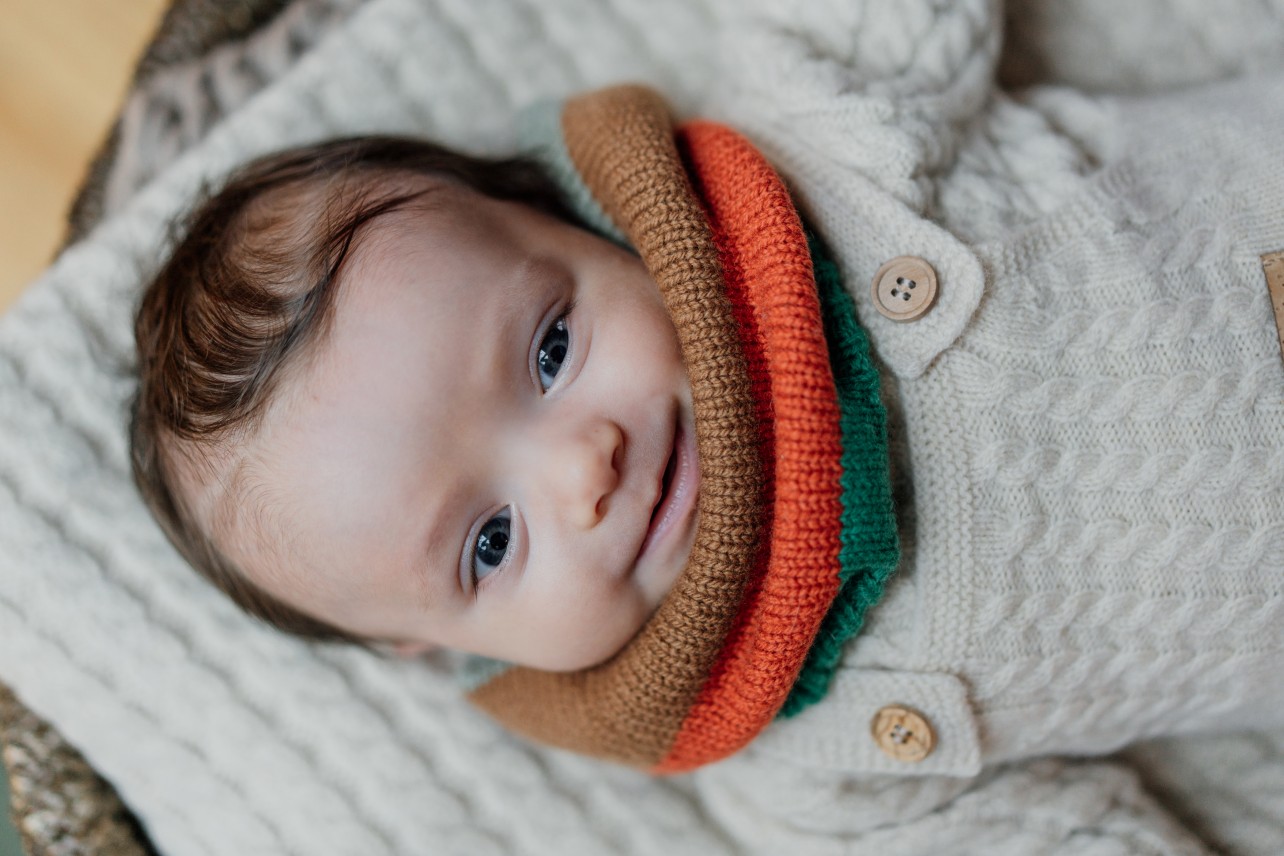When we talk about putting a baby to sleep, we can have many doubts and we don't always know how to behave at those times of day. Is it the right time? Is our baby in the right position? How many naps are necessary?
One answer we can give is that our son or daughter needs their naps and nights of sleep, because they are essential for their growth and development. These moments change from being many and of long or short duration, to fewer and shorter.
We've already covered some of the issues related to our baby's sleep here, in particular the importance it has for the little one's daily routine and what parents should take into account depending on their baby's needs.
Whether it's our first, second or third baby, our baby's experiences of falling asleep are different. For this reason, every detail can be important and it's crucial that we understand and know how to read all our children's signals. Above all, we want our son or daughter to be well, for us to be meeting their needs and for them to find a place of comfort and security in us, whatever action we take on a daily basis.
As such, we thought it would be necessary to bring in someone who specialises in this area of sleep and who could answer some questions and give us tips on how to get our children to sleep in the best possible way. So we brought back our Wedoble Talks guest Mafalda Navarro, a psychologist and sleep therapist, who shared with us all the tricks for getting babies to sleep better. We know it's a daily challenge for parents, but from now on we feel it will be easier or at least they will be more aware of certain signs that can be very useful.
Mafalda begins by answering an often-asked question: should we put babies to sleep or not? Her answer is simple - it depends on the situation.
She believes that up until the age of 2 months, we shouldn't let the baby sleep loose - the little one needs to adapt to the environment, as do the parents to this new reality. So there will be one main rule: respond to the baby when it cries and consider what is best for all three - mum, dad and baby. In this sense, the idea is to respect this period of adaptation, with no set rules, but rather to find a context in which everyone is fine, regardless of the method or technique you use to put your baby to sleep.
From the age of 3/4 months, we can start teaching our baby to fall asleep in bed. However, we must bear in mind that this doesn't mean total abandonment and crying on the part of the baby, we don't want that. For this stage, our therapist explains her experience and the techniques she has used. In this period, the baby will already have a stable and somewhat more defined bond with their parents. Therefore, teaching the baby to begin to have autonomy when it comes to falling asleep is important, and here we can include aspects such as the ability to fall asleep alone at a time when the baby can wake up in the middle of the night, using a teddy or nappy as a resource.
A fundamental point emphasised by Mafalda was not to let the baby cry at bedtime. This is not beneficial for the baby in neurological terms, and has the same effect on the parents in emotional and psychological terms. The feeling of abandonment is not at all good for the baby, who feels disorientated and doesn't know what to do, nor for the parent, who as soon as they hear their little one crying just wants to cuddle them and calm them down. In such a situation, it is advisable to take action and respond appropriately to the moment.
Throughout our conversation, Mafalda emphasised the need for parents to respond appropriately to the situation. To do this, it's essential to know how to read the baby's signals and the needs they are showing. However, some signs can often be confused, one example being a baby's hunger or sleep.
During the conversation with our psychologist, three essential points were mentioned when we talk about putting our baby to sleep: when, how and where.
We can start with when. We need to bear in mind that the need to fall asleep may come sooner or later than we think, which means that we should ideally put the baby to bed as soon as the first signs of sleep are visible (e.g. touch to the eye or ear), although these signs will depend on the baby.
Then there's the question of how - we have to be consistent, predictable and it's essential to create a bedtime routine so that the little one is calm. Cuddling, holding and calming our baby emotionally is necessary, as is having a set of actions that allow the little one to realise that it's time for that moment of the day.
The third and final aspect that was highlighted in our conversation was knowing where. It's advisable to have a quiet, sheltered environment (it doesn't always have to be the same place), with a suitable temperature and with the minimum of artefacts ( a nappy or teddy at most).
In addition to these three essential aspects to bear in mind, Mafalda adds that in the first few months of the baby's life, during their sleeping hours, we should check on them and make them cosy, using a nest or curled up, as if they were still inside their mother's tummy. However, from the age of 3/4 months, we should gradually begin to stop using these techniques, as the baby will already be more adapted to the outside world. This tip can also be applied to the type of bed, which should be adapted to the baby's growth and development.
Mafalda answers other important questions that came up during the conversation. So we're leaving the video here so you can see the version with the most detailed information and applied to the various situations presented.
The video is available on Wedoble's Facebook page - https://fb.watch/lqpN39v0LY/
Since we're dealing with a topic related to the challenge of getting our little ones to sleep, Wedoble considers bedtime or nap time to be a moment of absolute comfort. That's why we have our cosy bags, which can be a help for parents and a dream for little ones to sleep in anywhere. Some are simpler and others are cuter for this time of year. So here's a link to the new snuggle bags from the autumn/winter 2023 collection - https://www.wedoble.com/pt/outono-inverno-23/saco-aconchego_376-296.html . We hope you like them and we want to see your babies snuggled and comfortable in their bags, ready for a peaceful nap.
These were some of the tips from our Psychologist and Therapist Mafalda Navarro, and we would like to thank her in advance for her willingness to share these tips, experiences and answers to some of our questions with us.
What about you? How has this period of adaptation been? What tips and tricks have you learnt that have become essential and that you'd like to share here? We want to know your opinion.






